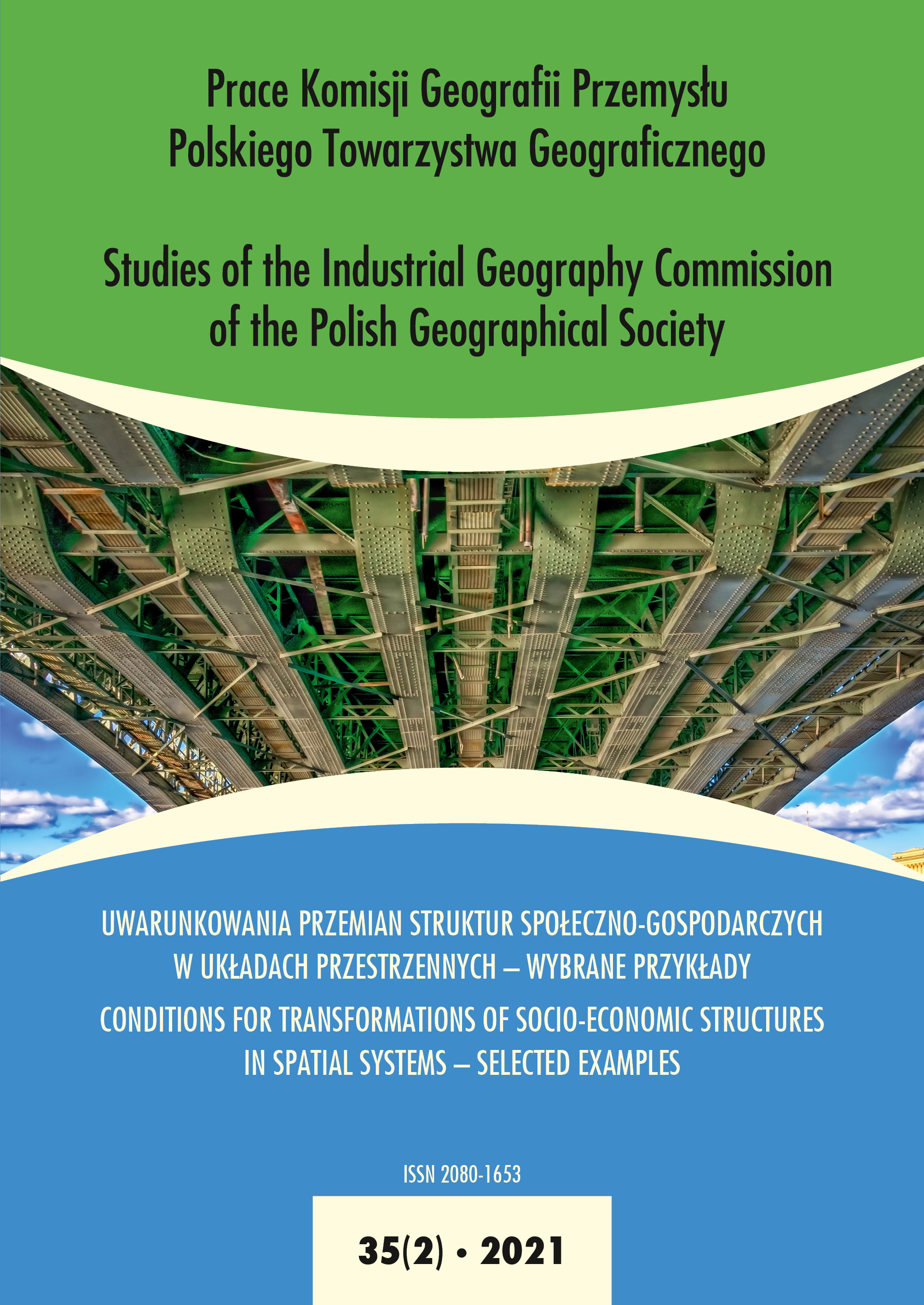The impact of the transformation of the economy of the Republic of Kazakhstan on the reproduction of human capital: socio-economic aspect
DOI:
https://doi.org/10.24917/20801653.352.3Keywords:
human capital, institutions for the development and reproduction of human capital, measurement of human capital, innovative economyAbstract
In the context of the transition of the national economy of the Republic of Kazakhstan to an innovative type of development, the issues of the formation and development of human capital are becoming increasingly important. Increasing labor productivity, developing high-tech production, creating innovative products in the republic is impossible without providing the branches of the national economy with personnel who have the necessary professional and personal competencies. In turn, social and economic factors affect the formation and quality of human capital, while there is an uneven spatial distribution of human resources. Accordingly, the priorities of the socio-economic development of the territories require coordination with the tasks of increasing human capital. The basis of this study is the analysis of the reproduction processes of human capital in the regions of the Republic of Kazakhstan, taking into account the socio-economic component. The object of the research is the human capital of the regions of the Republic of Kazakhstan, the subject of the research is the socio-economic aspect of the development of human capital. The method of the integral index for assessing human capital was taken as the main model for calculating human capital. We identified not only socio-economic factors affecting the effective use of human capital in the regions, but also demographic, environmental components and calculated indices based on these factors. The analysis showed that one of the key factors affecting the differentiation of the level of accumulated human capital is socio-economic. According to the results, the regions were identified as leaders and outsiders in terms of the level of accumulated human capital, regions with a post-industrial warehouse of the economy have high indicators of the human capital index, regions with agricultural specialization are low.
Downloads
Metrics
References
Agency for Strategic planning and reforms of the Republic of Kazakhstan. Bureau of National statistics. (2020). Retrieved from https://stat.gov.kz/ (Accessed on 06.11.2020).
Atlas Information System of Quality of Life at al-Farabi Kazakh National University. (2020). Retrieved from http://ais.kaznu.kz/index/tables (Accessed on 06.11.2020).
Becker, G.S. (1975). Human Capital. A Theoretical and Empirical Analysis, with Special Reference to Education. (2nd ed.). New York: National Bureau of Economic Research: distributed by Columbia University Press.
Begg, D., Dornbusch, R., Fischer, S. (1991). Economics. McGraw-Hill.
Chetty, R., Friedman, J.N., Rockoff, J.E. (2014). Measuring the Impacts of Teachers II. Teacher Value-Added and Student Outcomes in Adulthood. American Economic Review 104(9), 2633–2679.
Department of Economic and Social Affairs Population Dynamics UN. (2020). Retrieved from https://population.un.org/wpp/ (Accessed on 06.11.2020).
Dobrynin, A.I., Dyatlov, S.A., Tsyrenova, E.D. (1999). Human capital in a transitive economy: formation, evaluation, efficiency of use. SPb.: Nauka
Dublin, L.I., Lotka, A.J. (1930). Money Value of a Man. New York: Ronald Press.
Engel, E. (1882). Des Rechnungsbuch der Hausfrau und seine Bedeutung im Wirtschaftsleben der Nation. Berlin: L. Simion [Russian translation].
Human Capital Investment. An International Comparison. Centre for Educational Research and Innovation. (1998). Paris: OECD [Organisation for Economic Co-operation and Development].
Information-analytical system of the Bureau of National Statistics of the Agency for strategic planning and reforms of the Republic of Kazakhstan. (2020). Retrieved from https://taldau. stat.gov.kz/ (Accessed on 06.11.2020).
Johnson, N.L., Kotz, S. (2011). Leading Personalities in Statistical Sciences. From the Seventeenth Century to the Present. John Wiley & Sons.
Jong-Suk H., Jong-Wha, L. (2020). Demographic change, human capital, and economic growth in Korea. Japan and the World Economy, 53(March), 100984.
Kapelyushnikov, R.I. (2012). How much is the human capital of Russia? Moscow: National Researches University «Higher School of Economics».
Korchagin Yu, A. (2004). Human capital and development processes at the macro and micro levels. Voronezh: Tsire.
Kraay, A. (2018). Methodology for a World Bank Human Capital Index. Policy Research Working Paper 8593. Washington, DC: World Bank.
Meldakhanova, M.K., Kalieva, S.A. (2012). Human capital in the context of ensuring the competitiveness of the national economy: modern concept, priorities and implementation mechanisms. Almaty: IE KN MES RK.
Mincer, J., Polachek, S. (1974). Family investments in human capital: Earnings of women. Journal of Political Economy, 82, 76–108.
Nyussupova, G.N. (2018). Socio-demographic processes in the Republic of Kazakhstan. Regional aspects. Almaty: Kazak University Publishing House.
Petty, W., Graunt, J., & Hull, C.H. (1899). The economic writings of Sir William Petty. Cambridge: University Press.
Ravallion, M. (2011). On Multidimensional Indices of Poverty. Policy Research Working Paper 5580, Washington, DC: World Bank.
Serebryakova, N.A., Volkova, S.A., Volkova, T.A. (2019). Human integral assessment methodology capital of the region. Vestnik VGUIT [Proceedings of VSUET], 81(3), 375–380. doi:10.20914/2310-1202-2019-3-375-380 [in Russian].
Schultz, T. (1968). Human Capital in the International Encyclopedia of the Social Sciences. 6. New York: Macmillan.
Schultz, T.W. (1971). Investment in Human Capital. The Role of Education and of Research. New York: The Free Press.
Stiglitz, J., Sen, A., Fitoussi, J.-P. (2009). The Measurement of Economic Performance and Social Progress Revisited. Document de Travail de l’OFCE, 33. Paris: Observatoire Francais des Conjonctures Economiques (OFCE).
World Development Report 2004. Equity and development. Washington DC: The World Bank.
World Development Report 2019. Changing the Nature of Work.
Zubarevich, N.V. (2003). Social development of Russian regions. Problems and trends in the transition period. M.: Editorial URSS
Downloads
Published
How to Cite
Issue
Section
License
Articles are published under the terms of the Creative Commons License (CC BY-ND 4.0; Attribution– NoDerivs).

